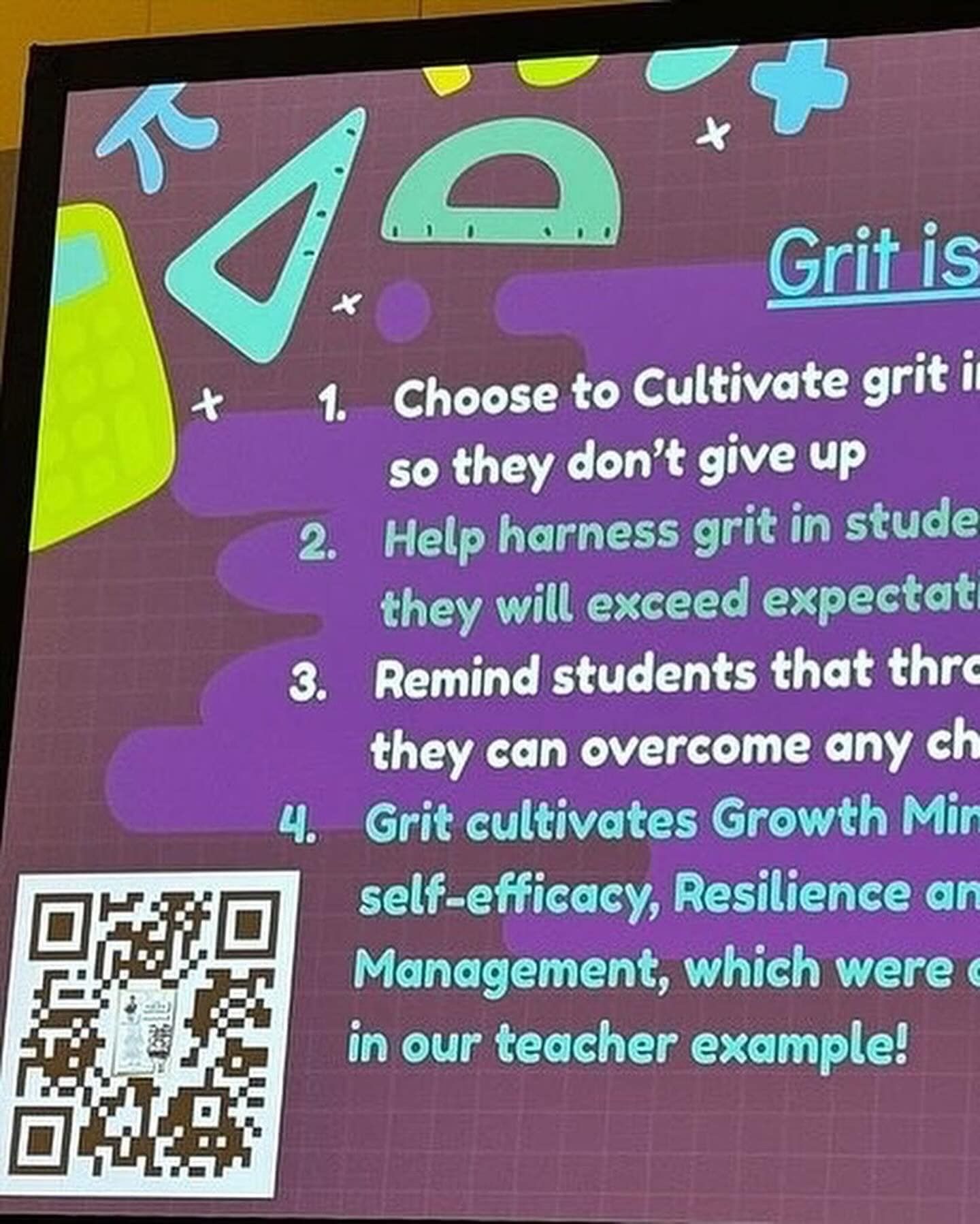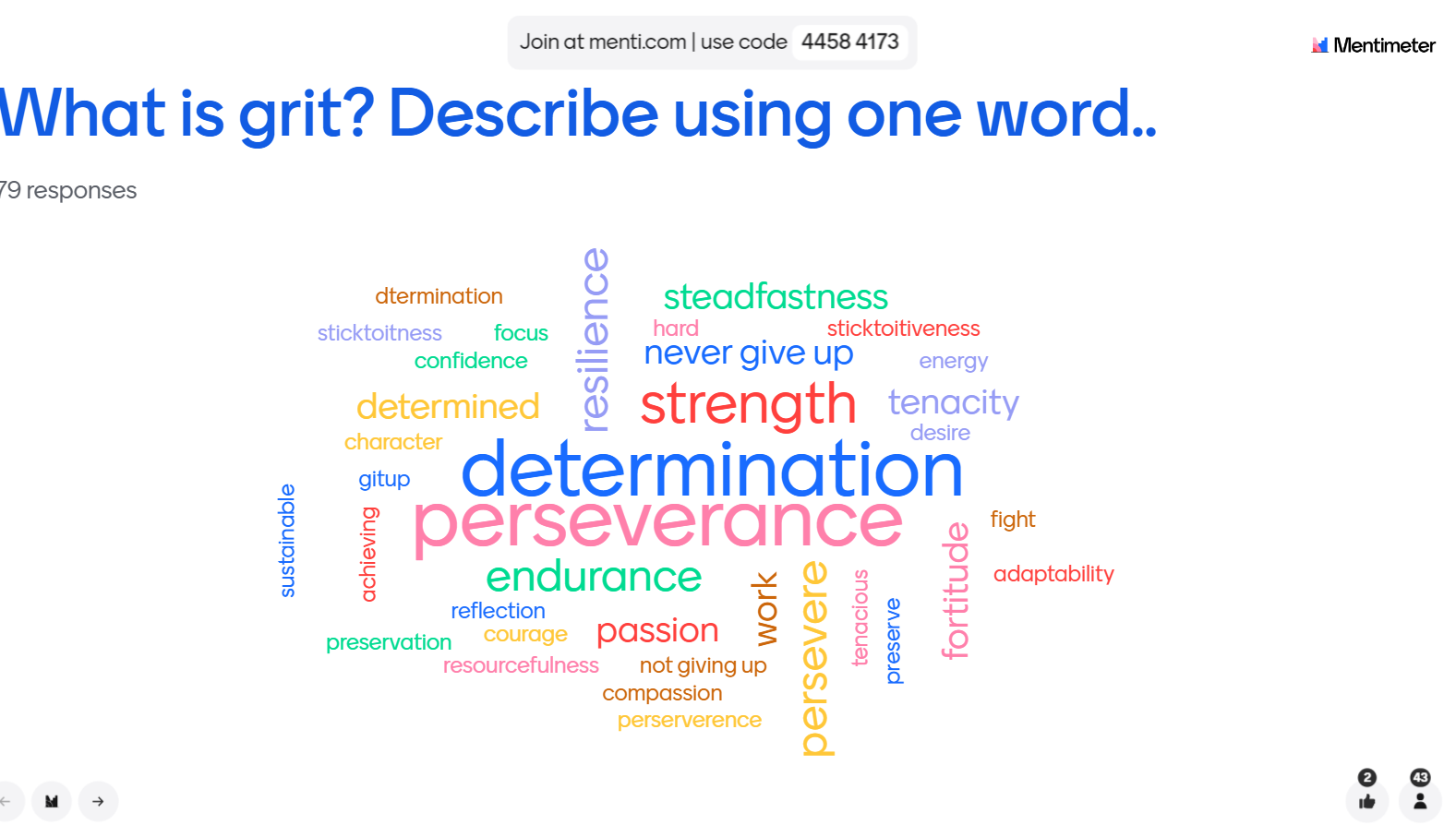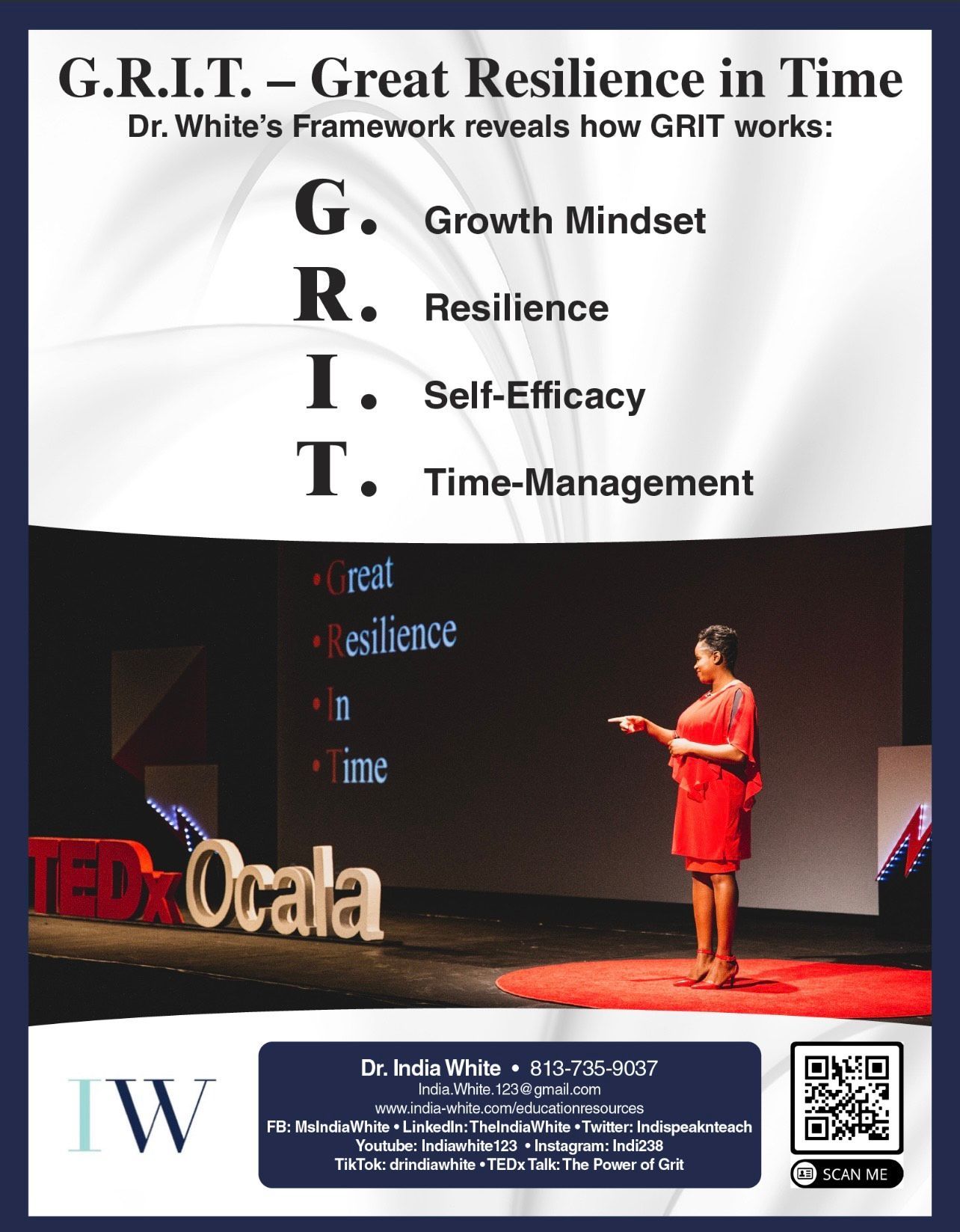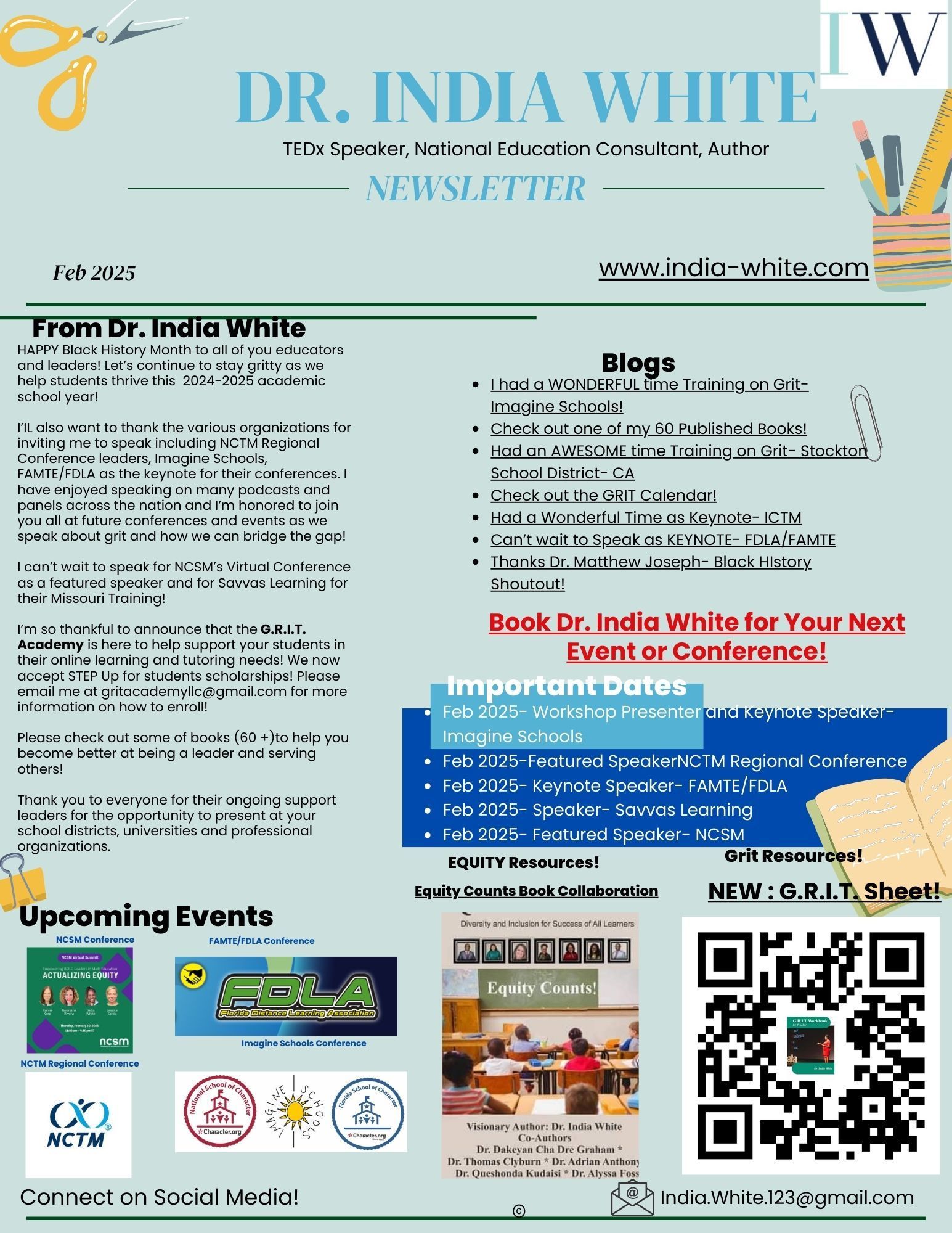Blog Layout
How the G.R.I.T. Framework Builds Math Fluency!
India White • October 23, 2024
How the G.R.I.T. Framework Builds Math Fluency for All Students!

The G.R.I.T. (Growth, Resilience, Self-Efficacy, and Time Management) framework provides a comprehensive approach to building math fluency across all tiers of education. By incorporating its principles, educators can foster an environment that supports diverse learners, enhances their understanding of mathematical concepts, and encourages perseverance in problem-solving. Here’s how each component of the G.R.I.T. framework contributes to developing math fluency at all levels:
1. Growth Mindset
Encouraging a growth mindset is central to the G.R.I.T. framework. It helps students see their abilities as improvable rather than fixed. In a math classroom, this translates to:
a. Emphasizing Process Over Product: Students learn to value the learning process, making them more willing to engage with challenging problems without the fear of making mistakes.
b. Encouraging Risk-Taking:
By fostering a culture that celebrates effort and progress, students become more willing to explore different strategies, leading to deeper understanding and mastery of math concepts.
2. Resilience
Resilience is crucial for students to bounce back from setbacks, especially in mathematics, where students often face difficulties. This aspect of G.R.I.T. supports math fluency by:
a.Promoting a Positive Response to Failure:
Students learn that mistakes are opportunities for growth, allowing them to persist through challenging problems.
b.Building Coping Strategies:Teaching students specific strategies to manage frustration and maintain focus helps them navigate complex tasks and encourages them to keep practicing until they achieve fluency.
3. Self-Efficacy
Self-efficacy refers to the belief in one's capabilities to succeed. In the context of math fluency, this component of the G.R.I.T. framework plays a significant role by:
a. Setting Achievable Goals:
Helping students set realistic and incremental goals fosters a sense of accomplishment, boosting their confidence in their math skills.
b.Highlighting Individual Progress: Regular feedback and opportunities for self-assessment help students recognize their growth over time, reinforcing their belief in their mathematical abilities.
4. Time Management
Effective time management skills are essential for students to practice and apply their math knowledge consistently. This element supports math fluency by:
a. Encouraging Structured Practice:Teaching students how to allocate time effectively for studying and practicing math concepts helps them reinforce their skills and improve retention.
b. Fostering Prioritization: Helping students learn to prioritize tasks ensures that they spend appropriate time on challenging concepts, preventing them from feeling overwhelmed.
Application Across Tiers
The G.R.I.T. framework is adaptable to various educational tiers:
Tier 1 (Universal Interventions):
In general classrooms, teachers can integrate G.R.I.T. strategies into daily instruction, promoting a growth mindset and resilience through collaborative learning and shared problem-solving experiences.
Tier 2 (Targeted Interventions):
For students who need additional support, small group instruction can focus on building self-efficacy and time management skills, providing targeted practice in specific areas of need.
Tier 3 (Intensive Interventions): In one-on-one settings, educators can personalize instruction by creating individualized learning plans that incorporate all four pillars of G.R.I.T., ensuring that students develop both confidence and fluency in mathematics.
Conclusion
By integrating the G.R.I.T. framework into math instruction, educators can cultivate an environment that nurtures growth, resilience, self-efficacy, and effective time management. This holistic approach not only enhances math fluency but also empowers students to become lifelong learners who are equipped to tackle challenges in mathematics and beyond.
Slide title
Write your caption hereButton
Slide title
Write your caption hereButton
Slide title
Write your caption hereButtonSlide title
Write your caption hereButton
Slide title
Write your caption hereButtonSlide title
Write your caption hereButton
Slide title
Write your caption hereButtonSlide title
Write your caption hereButtonSlide title
Write your caption hereButton

By India White
•
February 11, 2025
Join us on the Let's Get Gritty Podcast with Dr. India White. On this show, we will repeat a show from the Grit and Equity talks Podcast with Dr. India White, where we walk through the recently released NAEP data from the National Report Card and speak about moving the needle forward. Listen on Spotify: https://podcasters.spotify.com/pod/show/india-white3 #grit #equity #naep #drindiawhite #nctm #ncsm #bwxme #math #teachers #students

By India White
•
February 11, 2025
🌟 Just wrapped up an incredible G.R.I.T. Training session with the amazing leaders from Imagine Schools! 💪✨ We took a deep dive into the G.R.I.T. framework, and I can't wait to see the results unfold! 🚀🙌 #drindiawhite #grit #imagineschools #tedx #nctm #ncsm #bwxme 🎉 (I don’t own music copyright

By India White
•
February 6, 2025
Thankful for Partnership and Recognition: A Shoutout to Dr. Matthew Joseph and X-Factor EDU Network I am incredibly thankful to partner with Dr. Matthew Joseph and the amazing leadership of the X-Factor EDU Network! It is truly an honor to collaborate with such a visionary leader who is dedicated to amplifying voices in education and creating spaces for impactful conversations. This month, I was deeply grateful to be mentioned in Dr. Joseph’s newsletter during Black History Month. His recognition means so much, not just for me, but for the work we are all doing to inspire and empower educators and students alike. You can check out the newsletter here: https://www.linkedin.com/posts/drmxj_stongertogether-activity-7291502796753809408-0zX3?utm_source=share&utm_medium=member_desktop&rcm=ACoAAAmqD2wBkz8Qc7EA0bvwxWyMJH2HykCUA-Y But beyond the shoutout, I’m even more excited about the opportunities ahead—including the chance to have a podcast on Dr. Joseph’s platform! Partnering with X-Factor EDU Network opens doors to share insights, engage in meaningful discussions, and continue championing grit, resilience, and equity in education. Thank you, Dr. Matthew Joseph, for your support, encouragement, and belief in this mission. Looking forward to what’s to come! 🚀 #StrongerTogether #GRIT #XFactorEDU #BlackHistoryMonth #EducationalLeadership #Thankful

By India White
•
February 6, 2025
Fired Up for FDLA/FAMTE Keynote: Let’s Build Grit Together! I’m beyond excited to take the stage as the keynote speaker at the FDLA/FAMTE Conference tomorrow! 🎤🔥 We’ll be diving deep into the power of G.R.I.T.—Great Resilience in Time—and how it transforms both educators and students. This opportunity means so much, and I’m grateful to everyone who has supported this journey. Grit isn’t just a concept; it’s a movement. It’s about growth mindset, resilience, self-efficacy, and time management, and it’s what drives success in the classroom and beyond. Let’s empower educators and students across the nation to push past obstacles and embrace productive struggle. Who’s ready to get gritty? 💪🏾 #Grit #DrIndiaWhite #TEDx #FDLA #FAMTE #Education #GrowthMindset

By India White
•
February 5, 2025
Had an Amazing Time at the Imagine Summit! I had a fantastic time speaking at the Imagine Summit on G.R.I.T.! 🙌🏽 We engaged in powerful breakout sessions, had meaningful discussions about NAEP data, and explored strategies to build **growth mindset, resilience, self-efficacy, and time management** in education. Thank you to everyone who participated and brought such great energy to the conversations! Let’s continue working together to bridge gaps and empower students through grit and perseverance. 💪🏽 #GRIT #ImagineSummit #Resilience #Education #GrowthMindset #EquityInEducation #drindiawhite

By India White
•
February 5, 2025
Building Grit in Teachers at the Imagine Leadership Summit I am beyond excited to be speaking at the Imagine Leadership Summit today, sharing insights on how we can build grit in teachers and empower them to foster resilience, self-efficacy, and growth in their students. 🌟 This summit is an incredible opportunity to collaborate with principals and education leaders who are committed to supporting and strengthening teachers. When we invest in teacher grit, we build stronger, more effective classrooms where students develop the perseverance to tackle challenges and achieve success. A huge thank you to the Imagine Summit leaders for this amazing opportunity! It’s an honor to be among such an outstanding lineup of speakers, including the incredible Kyle Pearce and Jon Orr. Join our sessions today and take GRIT with you—because when teachers grow in resilience, our students thrive! #GRIT #Teachers #Principals #DrIndiaWhite #NCTM #NCSM #ImagineSummit 😊

By India White
•
January 26, 2025
🌟 What an incredible time at the ICTM conference in Indiana! The lineup was amazing, and the energy was contagious! 🎉 Since I missed the snow back in Florida, I embraced it fully here and made my very first snow angel! ❄️ So grateful for the fun and gritty spirit of the ICTM rockstars! Huge thanks to Angela and every rockstar for this fantastic opportunity! 💙 #drindiawhite #grit #ictm25 #math #teachers #students #indiana #nctm #ncsm

By India White
•
January 25, 2025
✨ Today’s Grit training at Stockton Unified was absolutely amazing! We had a fantastic time connecting with friends and meeting some incredible rockstars in California. 🌟 I can’t wait to see how gritty Stockton becomes! Huge thanks to Andrew and the tribe for the opportunity to train your amazing leaders. Let’s all take grit with us as we move forward! 💪 #Grit #Leadership #StocktonUnified #drindiawhite #tedx #nctm #ncsm #nabse
Contact Us
Thank you for contacting us.
We will get back to you as soon as possible.
We will get back to you as soon as possible.
Oops, there was an error sending your message.
Please try again later.
Please try again later.
© 2025
India White, All Rights Reserved. Powered By Automation Links
Terms of Us | Privacy Policy | About






